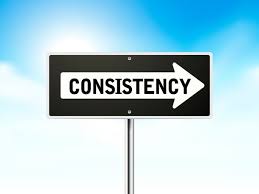Client objections are not roadblocks, but rather opportunities to showcase your expertise and build long-standing relationships with clients. Handling objections effectively is a skill that separates the average salesperson from the exceptional one. In this article, we’ll explore strategies and tips to help you navigate client objections with confidence.
1. Listen Actively
When a client raises an objection, it’s crucial to actively listen before formulating a response. Give them the space to voice their concerns fully, without interruption. This not only demonstrates respect but also allows you to understand the root of their objection.
2. Empathize
Empathy is your secret weapon when it comes to handling objections. Put yourself in the client’s shoes and show them that you genuinely understand their perspective. This connection can help disarm any potential tension and open the door for a more constructive conversation.
3. Clarify for Understanding
Before you address the objection, make sure you have a clear understanding of what the client is concerned about. Ask clarifying questions to ensure that you’re addressing the right issue. This also shows the client that you’re genuinely interested in their needs.
4. Avoid Defensiveness
It’s natural to feel defensive when faced with objections, but it’s important to remain calm and composed. Remember, objections are not personal attacks; they’re a part of the decision-making process. Responding defensively can escalate the situation and hinder productive dialogue.
5. Reframe the Objection
Once you’ve identified the objection, reframe it in a positive light. Turn the objection into an opportunity to highlight the benefits of your product or service. For example, if the objection is about pricing, emphasize the value and long-term benefits that outweigh the cost.
6. Provide Relevant Information
Back up your response with data, case studies, or success stories that illustrate how your product or service has addressed similar objections in the past. Concrete examples can lend credibility to your claims and alleviate doubts.
7. Offer Solutions
Clients want solutions to their problems, so be ready to provide alternative options or compromises. This not only shows flexibility but also reinforces your commitment to finding the best fit for their needs.
8. Address Objections Proactively
Anticipate common objections and address them proactively during your pitch or presentation. By addressing concerns before they’re raised, you can build trust and reduce the likelihood of objections derailing the conversation later on.
9. Use Social Proof
Leverage the power of social proof to bolster your responses. Share testimonials, reviews, or endorsements from satisfied clients who initially had similar objections but found value in your solution.
10. Ask for Confirmation
After addressing the objection, ask the client if they’re satisfied with the response or if there are any lingering concerns. This demonstrates your commitment to their satisfaction and gives them the opportunity to voice any additional thoughts.
11. Close with Confidence
Once you’ve effectively handled the objection, transition back to the main conversation with confidence. Use this moment to reinforce the benefits and value of your offering, steering the conversation back towards closing the deal.
In conclusion, objections are an inherent part of the sales process, and mastering the art of handling them is essential for any successful sales professional. By approaching objections with active listening, empathy, and a solutions-oriented mindset, you can transform objections into opportunities and build stronger relationships with your clients. Remember, objections are a chance to showcase your expertise and turn potential challenges into wins.
Interested in more? Explore our PROGRAMMES DE FORMATION À LA VENTE.
Let’s connect and discuss how we can help transform your team’s sales results.
Optimé International | Recognized as a Top Sales Training Company (2024) by Selling Power Magazine



